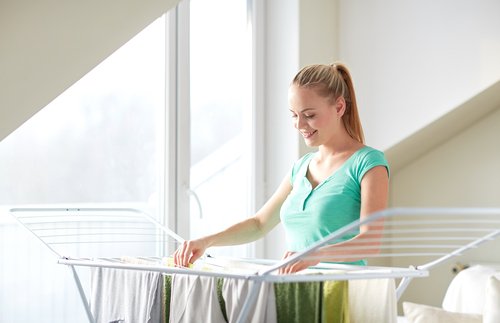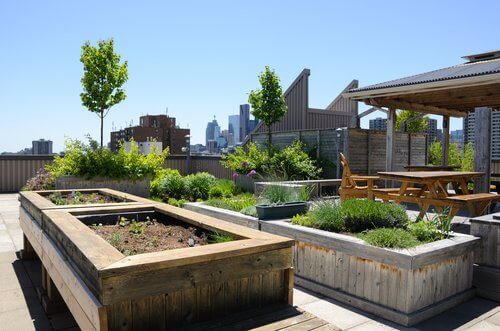Why It's Bad to Line Dry Clothes in Your House

Probably when you saw the title, you thought something about how your clothes would be affected. Maybe it was that line drying would stress them or make them fade. Nothing could be farther from what we want to tell you. Our concern is that if you line dry clothes in your house you will have health problems.
This is because of the humidity that your clothes make when drying. As you know, this is one of the things that makes a great living condition for mites. One of the other conditions they love is a dusty house.
As a result, this environment will also be the perfect place for hay fever. Hay fever is bad enough. That being said, it can greatly affect people who suffer from allergies, asthma, or other respiratory illnesses.
You shouldn’t line dry clothes in your house

The Department of Ambiental Architecture Investigation in Glasgow, Scotland completed a study with important findings.
The group studied 100 homes. Of these houses, 87% line dried their clothes at home. They took a look at the houses that line dried clothes. These homes had enough humidity for both mites and mold to grow.
They also found that in these homes 25% of the people had a weakened immune system and suffered from pulmonary infections.
Everyone has a washer, but not everyone has a dryer. Why? Granted, it is rare to see dryers in many countries around the world. This is due, in part, to their high prices. On a different note, electric devices like dryers are bad for the environment. So then, what can we do?
Tricks to line dry clothes in your house quickly
If we don’t have any other alternative, we should learn the best way to dry clothes at home. And, of course, we want to do this as quickly as possible.
1. Put space between your clothes on the line
By doing this, each piece of laundry will get its own air. This also means they won’t catch the humidity of other clothes.
2. Turn thick clothes
Fabrics like jeans are very thick. They can be difficult to dry at home. However, you an reduce the amount of time it takes to dry them if you turn them. Once one side has dried out, we should turn it over.
See also: Four Ways to Disinfect Kitchen Towels
3. Use a hair dryer for small clothes

First, make sure you spin dry your clothes. Then pass your hair dryer over them a few times. After that, they should be good to go.
It shouldn’t take too much work. After all, the washing machine did most of the work for you.
4. Put them in the freezer
This is a very interesting method. Think about those rainy days where you don’t have anything to wear. But, you also have to go to work for the next few days.
Well, take a plastic bag and put what you want to wear in it. Then freeze your clothes.
When your clothes thaw, you’ll be surprised that everything is completely dry. All you have to do is iron your clothes and you’re ready to go.
See also: Four Ways to Wash and Disinfect Pillows
We need a sustainable architecture
In the study, the authors also talked about the impact of architecture. They said that ideally, buildings should be built with areas for taking care of clothes.
These can be either inside or outside areas. Also, it can be in your living space or in a communal space. That being said, the second option is better. This is because it reduces the need to use clothes dryers.

Today, more than ever, people know the impact of such an action. After all, this is something they take into account when they plan cities and neighborhoods. The consequences of this mindset are obvious. Not only are we taking care of ourselves, we’re also taking care of our planet. This gives the ability to live and create.
This text is provided for informational purposes only and does not replace consultation with a professional. If in doubt, consult your specialist.








